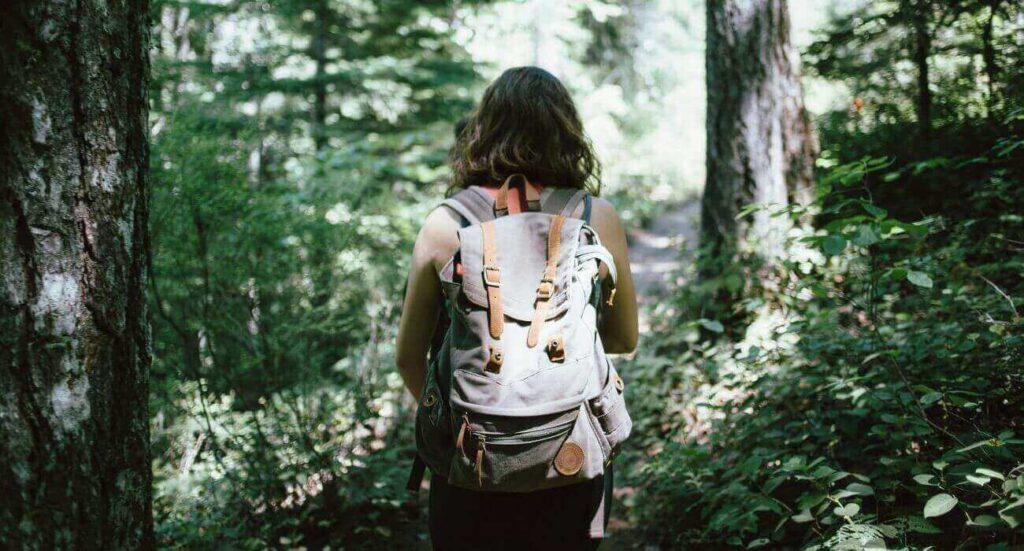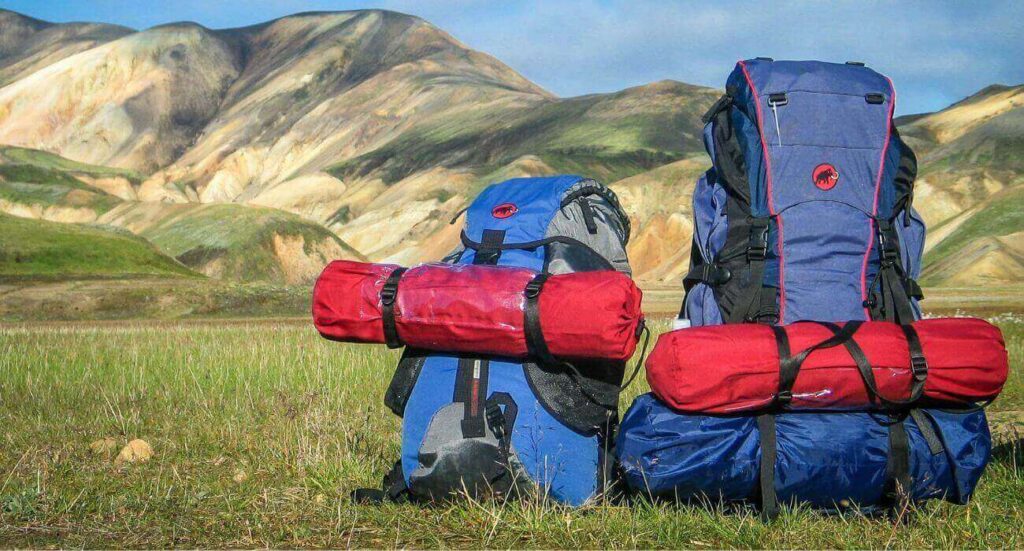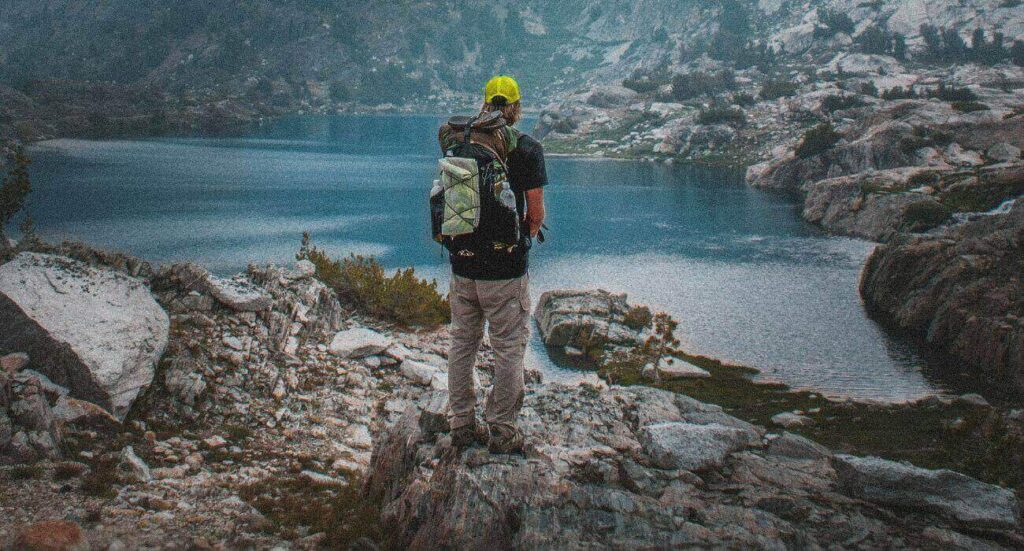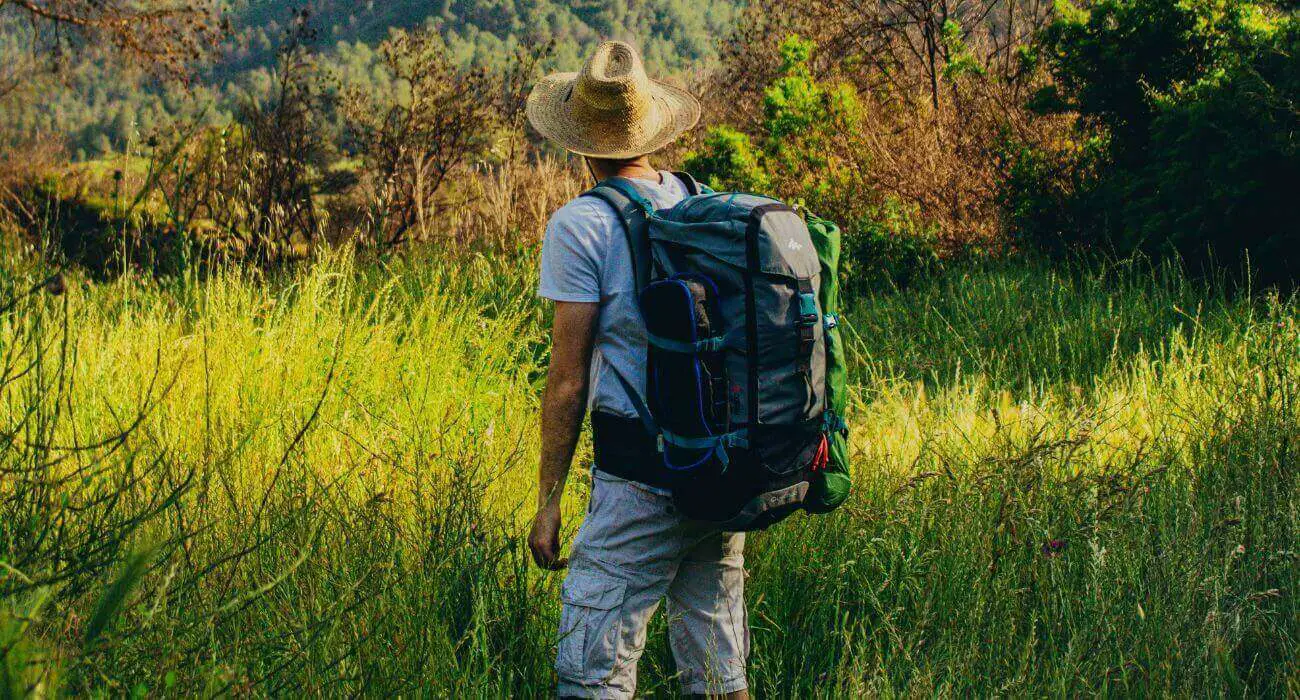As an Amazon Associate, I earn from qualifying purchases
To pack a backpack for camping, fill out extra space with a small sleeping pad, camp clothes, or a camp pillow. Layer the heaviest gear against the back of the pack, including camp food, cook system, and tent body.
Fill the body of the pack with the lightest items, such as lightweight clothes, camp towel, or light toiletry items. When it comes to organizing your backpack, use the smaller compartments for toiletries, electronics, and travel documents, and use the larger compartment for clothing and bulkier items.
Additionally, organize items by weight and size to optimize space and weight distribution. When camping, you can keep your backpack in the vestibule of your tent, hang it off a lower tree branch, or lean it against a tree outside if the weather permits.
Packing Techniques For A Camping Backpack

Fill any extra space with a small sleeping pad, camp clothes, or a camp pillow. Place your heaviest gear against the back of the pack, including camp food, your cook system, and tent body.
Finally, fill the body of the pack with lighter items such as lightweight clothes, a camp towel, or toiletry items.
When preparing for a camping trip, properly packing your backpack is essential. Efficient packing not only ensures that you have all the necessary gear and supplies but also helps distribute weight evenly for a more comfortable and balanced hike. In this guide, we will explore various packing techniques to optimize the space in your camping backpack.
Packing The Bottom
The bottom of your backpack is where you should place items that you won’t need until you set up camp. This includes your sleeping bag, camp pillow, and extra layers for nighttime. To protect these items from moisture, consider using a waterproof sack or a dry bag. Placing them at the bottom also helps to anchor and stabilize your backpack.
Packing The Middle
The middle of your backpack is ideal for heavier and denser items. This includes your cooking equipment, camp stove, and food supplies. Place these items against your back for better weight distribution and balance. Remember to pack them in a way that minimizes movement and potential damage.
Where To Put Your Tent
Your tent is one of the bulkiest items you’ll be carrying, but it’s important to keep it easily accessible in case you need to set up camp quickly. Most backpacks have designated compartments or straps for securing your tent to the outside of your pack. If not, you can place it vertically, using compression straps to keep it secure and compact.
Adding A Water Reservoir
Staying hydrated is crucial during outdoor adventures. To ensure easy access to water, consider adding a water reservoir or hydration bladder to your backpack. These can be placed in a special hydration sleeve inside your pack. It’s important to pack the reservoir in a way that doesn’t interfere with other gear and provides convenient access to the drinking tube.
Headlamp And First Aid Kit
Items like your headlamp and first aid kit should be easily accessible in case of emergencies or during nighttime activities. Keep them in the top compartment or in outer pockets of your backpack. This way, you can quickly retrieve them without having to unpack your entire bag.
Extra Layers
Throughout your camping trip, weather conditions can change rapidly. It’s essential to have extra layers easily accessible. Pack them in outer pockets or in the top compartment of your backpack. This way, you can quickly add or remove layers as needed without disrupting the organization of your bag.
Cell Phone And Snacks
Small essentials like your cell phone and snacks should be within easy reach. Keep them in zippered pockets or small compartments on the hip belt or shoulder straps of your backpack. This ensures quick access to these items without having to rummage through your entire pack.
Outside Lash Points
Most camping backpacks come with external lash points or attachment loops. Utilize these to secure additional gear such as trekking poles, a camp chair, or a tent footprint. Securely fastening these items to the outside of your pack frees up space inside and keeps the weight balanced.
Closed Cell Foam Pad
A closed-cell foam pad provides cushioning, insulation, and protection. It can be rolled and attached to the outside of your backpack, utilizing the external lash points. This not only keeps your foam pad secure but also creates another layer of padding on the outside of your backpack.
Tips For Properly Packing Your Backpack

Properly packing your backpack is essential for a successful camping trip. Following a systematic approach will help you utilize space efficiently and ensure that your backpack is well-balanced and easy to carry. In this section, we will discuss some tips for properly packing your backpack, focusing on various categories such as sleeping gear, stove system, and external pockets.
Packing Categories
Before we dive into the specifics, let’s first establish the packing categories for your backpack. This will help you organize your items and make it easier to access them when needed. Here are the main categories:
- Sleeping Bag
- Sleeping Gear
- Stove System
- Closing the Backpack
- What to Pack in the Front
- External Pockets
- Hiking Poles
Sleeping Bag
The sleeping bag is one of the bulkiest items in your backpack. To save space, make sure you compress it properly. Rolling it tightly and using compression sacks can significantly reduce its size.
Where To Put Your Sleeping Bag
When it comes to placing your sleeping bag in your backpack, there are two main options:
| Option | Description |
|---|---|
| In the Bottom | Placing your sleeping bag at the bottom of your backpack is a common practice, as it provides a stable base and lowers your center of gravity. |
| In a Compartment | If your backpack has a designated sleeping bag compartment, it can be a convenient place to store your sleeping bag. This depends on the design of your backpack. |
Sleeping Gear
Your sleeping gear includes items such as a sleeping pad, pillow, and liner. To save space, you can roll your sleeping pad and place it alongside your sleeping bag. Stuff your pillow and liner in the gaps to maximize space utilization.
How To Pack Your Stove System
The stove system is an essential part of your camping gear. To pack it efficiently, consider the following steps:
- Disassemble the stove and pack each component separately.
- Place the fuel canister in an upright position to prevent leaks.
- Store sharp objects, such as utensils and knives, in a protective case to avoid injuries and damage to other items.
Closing The Backpack
Once you have packed all the necessary items, it’s time to close your backpack. Follow these steps:
- Ensure that all zippers and compartments are properly closed.
- Tighten any compression straps to secure your load.
- Double-check that no loose items are hanging from the backpack.
- Adjust the shoulder straps and hip belt for a comfortable fit.
What To Pack In The Front
When packing your backpack, it’s important to keep certain items easily accessible. Consider placing the following items in the front pockets:
- Maps and compass
- Sunscreen and bug repellent
- Snacks and water bottle
- First aid kit
External Pockets
Your backpack’s external pockets are great for storing items that you may need to access frequently or quickly. These include:
- Sunglasses and hat
- Trekking poles
- Rain gear
- Trash bag
Hiking Poles
If you use hiking poles, it’s advisable to attach them to the external loops or use a dedicated pole attachment system on your backpack. This way, your hands are free, and you have easy access to your poles whenever needed.
Personal Backpacking Packing Method

When it comes to backpacking, everyone has their own unique packing methods. In this part of our article, we’ll dive into the personal backpacking packing method of an experienced backpacker named Gijs. Gijs has spent countless nights under the stars and has perfected his packing technique to ensure maximum efficiency and comfort on the trail.
Who Is Gijs
Gijs is an avid backpacker based in Austin, Texas. He has been exploring the great outdoors for over a decade and has hiked through various terrains, from rugged mountains to lush forests. Gijs is known for his attention to detail and his ability to pack his backpack in a way that optimizes weight distribution and accessibility.
What’s In My Backpack?
When it comes to packing his backpack, Gijs has a systematic approach. He carefully considers each item and its placement in order to achieve balance and convenience. Here’s a breakdown of what you can find in Gijs’ backpack:
The Tent
The tent is one of the most important pieces of gear for a backpacking trip. Gijs always packs his tent first and places it at the bottom of his main compartment. By doing so, he ensures that it is well-protected and stabilized.
Poles
Next, Gijs secures his tent poles to the side of his backpack using the external lash points. This saves space inside the main compartment and keeps the tent poles easily accessible.
Main Compartment Leftovers
The main compartment of Gijs’ backpack is reserved for items that he frequently needs during the day, such as his sleeping bag, extra clothing layers, and food. He organizes these items using packing cubes or compression sacks to maximize space and keep everything organized.
Outside Storage For Rain Jacket, Bottles, And Knife
Gijs utilizes the outside storage options of his backpack to carry his rain jacket, water bottles, and knife. This allows for easy accessibility and saves space inside the main compartment.
The Toplid For Gloves, Hat, First Aid, Etc.
On the top lid of his backpack, Gijs keeps items that he may need to grab quickly, such as gloves, a hat, a first aid kit, and other essentials. This top lid compartment is easily accessible without having to dig through the main compartment.
Trekking Poles
Lastly, Gijs attaches his trekking poles to the outside of his backpack using the dedicated loops or attachment points. This keeps them securely in place and easily accessible when needed.
In conclusion, Gijs has developed a personal backpacking packing method that prioritizes organization, convenience, and weight distribution. By carefully considering each item and its placement, he ensures that everything he needs is easily accessible and optimizes the space inside his backpack. This method can serve as a valuable guide for any backpacker looking to improve their packing efficiency on their next camping adventure.
Frequently Asked Questions For How To Pack A Backpack For Camping
What Is The Most Efficient Way To Pack A Camping Backpack?
The most efficient way to pack a camping backpack is to use a small sleeping pad, camp clothes, and a camp pillow to fill extra space. Place the heaviest gear, such as camp food, cook system, and tent body, against the back of the pack.
Fill the body of the pack with lightweight items like clothes, towel, or toiletries. Keep the backpack outside the tent, either hanging it on a tree branch or leaning it against a tree with a pack cover.
What Is The Best Way To Pack A Travel Backpack?
To pack a travel backpack efficiently, fill extra space with a small sleeping pad, camp clothes, or a camp pillow. Place heavy gear like cook systems, camp food, and tent body against the back of the pack. Fill the body with lighter items such as lightweight clothes and toiletries.
Utilize smaller compartments for toiletries, electronics, and travel documents, while larger compartments are for clothing and bulkier items. Organize items by weight and size for better organization.
Where Do You Keep Your Backpack When Camping?
When camping, you can keep your backpack outside the tent by hanging it from a lower tree branch or leaning it against a tree with a pack cover over it.
Should I Pack My Tent Inside Or Outside My Backpack?
Pack your tent inside your backpack to protect it from potential damage and to make it easier to carry.
Conclusion
Packing a backpack for camping requires careful organization and strategic placement of items. Fill the extra space with light items like clothes and toiletries, and layer heavier gear against the back of the pack. Utilize smaller compartments for toiletries and electronics, while using the larger compartment for clothing and bulkier items.
Remember to consider weight and size when organizing your backpack. By following these tips, you can efficiently pack your backpack for a successful camping trip.
Read More
Top 7 Best Pop Up Camping Tents
How to Wash Dishes While Camping
How to Clean a Tent After Camping
As an Amazon Associate, I earn from qualifying purchases

